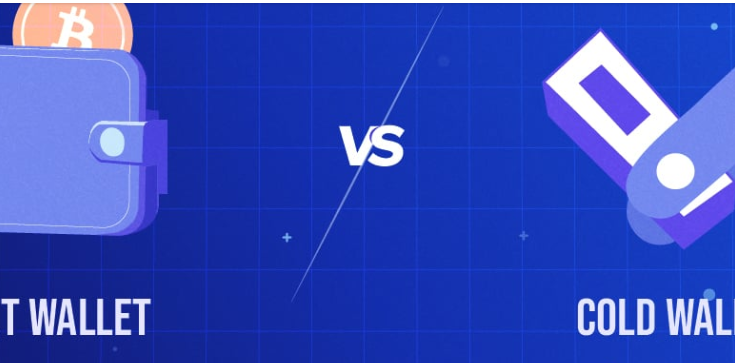Crypto Wallets Explained: Hot vs. Cold Storage
In the world of cryptocurrency, the security of your digital assets is paramount. As more individuals and businesses invest in cryptocurrencies, understanding the tools to safeguard these assets becomes essential. Crypto wallets play a crucial role in this process, and they can be classified into two main types: hot wallets and cold wallets. This review aims to provide a comprehensive understanding of these wallets, their functions, features, pros and cons, and alternatives. By the end of this article, you will have a clearer insight into which type of wallet might best suit your needs.
What is Crypto Wallets Explained: Hot vs. Cold Storage?
A crypto wallet is a digital tool that allows users to store and manage their cryptocurrencies. It does not physically store coins but instead keeps the public and private keys needed to conduct transactions on a blockchain.
Hot Wallets
Hot wallets are connected to the internet and allow for easy access and management of cryptocurrencies. They are ideal for users who frequently trade or transact with their digital assets. Some common types of hot wallets include:
- Web wallets: Accessible through a web browser, these wallets are easy to set up but may be vulnerable to cyber attacks.
- Mobile wallets: Installed on smartphones, mobile wallets offer convenience for on-the-go transactions.
- Desktop wallets: Software applications installed on personal computers, providing a balance between security and accessibility.
Cold Wallets
Cold wallets, on the other hand, are offline storage solutions designed to protect cryptocurrencies from online threats. They are recommended for long-term storage of digital assets. Types of cold wallets include:
- Hardware wallets: Physical devices that store private keys offline, making them highly secure.
- Paper wallets: Printed pieces of paper containing the public and private keys, which can be generated offline.
How Crypto Wallets Explained: Hot vs. Cold Storage Work
How Hot Wallets Work
Hot wallets work by maintaining a constant connection to the internet. They enable users to send and receive cryptocurrency instantly. Here’s how they function:
- Account Creation: Users create an account through a wallet service, often providing an email and password.
- Key Generation: Upon account creation, the wallet generates a public and private key pair.
- Transaction Execution: Users can send and receive cryptocurrency by inputting the recipient’s address and their private key to authorize transactions.
How Cold Wallets Work
Cold wallets work differently, focusing on offline storage to enhance security. The process includes:
- Key Generation Offline: Users generate their key pairs using a device not connected to the internet.
- Storage on Hardware or Paper: The private key is stored on a hardware device or printed on paper, ensuring it remains offline.
- Transaction Signing: To conduct transactions, users must connect their cold wallet to an online device briefly, sign the transaction with their private key, and then return it offline.
Features of Crypto Wallets Explained: Hot vs. Cold Storage
| Feature | Hot Wallets | Cold Wallets |
|---|---|---|
| Accessibility | High; always connected to the internet | Low; must connect briefly for transactions |
| Security | Lower; vulnerable to online threats | Higher; offline storage protects from hacks |
| User Experience | User-friendly, ideal for frequent transactions | Requires more technical knowledge for setup |
| Cost | Generally free or low-cost | Hardware wallets can be expensive; paper wallets are free |
| Backup and Recovery | Often involves account recovery methods | Requires physical access to the wallet |
| Best Use Case | Day-to-day transactions and trading | Long-term storage of assets and investments |
Pros of Crypto Wallets Explained: Hot vs. Cold Storage
| Pros | Hot Wallets | Cold Wallets |
|---|---|---|
| Convenience | Easy to access and manage assets | Highly secure for long-term storage |
| Quick Transactions | Instant access to funds for trading | Secure storage minimizes the risk of loss |
| User-Friendly | Simple setup and operation | One-time setup; no ongoing management required |
Cons of Crypto Wallets Explained: Hot vs. Cold Storage
| Cons | Hot Wallets | Cold Wallets |
|---|---|---|
| Security Risks | Vulnerable to hacking and phishing attacks | Less convenient for frequent transactions |
| Potential Downtime | Service outages can restrict access | Requires manual processes for transactions |
| Dependence on Internet | Requires internet access to function | Can be cumbersome to use for regular trading |
Crypto Wallets Explained: Hot vs. Cold Storage Alternatives
| Alternative | Description |
|---|---|
| Multi-Signature Wallets | Require multiple keys to authorize a transaction, adding an extra layer of security. |
| Custodial Wallets | Managed by third parties, ideal for beginners but less control over private keys. |
| Paper Wallet Generators | Services that help create paper wallets securely, ensuring the private keys are not exposed online. |
Conclusion and Verdict: Crypto Wallets Explained: Hot vs. Cold Storage
In conclusion, both hot and cold wallets have their unique advantages and disadvantages. Hot wallets are perfect for active traders who need quick access to their assets, while cold wallets offer robust security for those looking to store their cryptocurrency for the long term.
Ultimately, the choice between hot and cold storage will depend on your individual needs, risk tolerance, and trading habits. Many users choose to maintain both types of wallets, using hot wallets for daily transactions and cold wallets for secure long-term storage.
FAQs: Crypto Wallets Explained: Hot vs. Cold Storage
1. What is the main difference between hot and cold wallets?
Hot wallets are connected to the internet and provide easy access to your funds, while cold wallets are offline storage solutions designed for enhanced security.
2. Are hot wallets safe to use?
Hot wallets are generally safe for frequent transactions but are more vulnerable to cyber threats compared to cold wallets. It’s important to choose reputable wallet services and use strong passwords.
3. Can I use both hot and cold wallets?
Yes, many users opt to use both. Hot wallets for everyday transactions and cold wallets for storing larger amounts of cryptocurrency securely.
4. How do I choose the right wallet for me?
Consider your needs—if you trade frequently, a hot wallet may be suitable. For long-term storage, a cold wallet is advisable. Evaluate security features, ease of use, and backup options.
5. What should I do if I lose access to my wallet?
For hot wallets, use the recovery options provided by the service. For cold wallets, if you lose your hardware device or paper wallet without backups, you may permanently lose access to your funds. Always keep backups in secure locations.
This review offers a comprehensive overview of the differences between hot and cold wallets, ensuring that users have the necessary information to make informed decisions about storing their cryptocurrencies securely.



